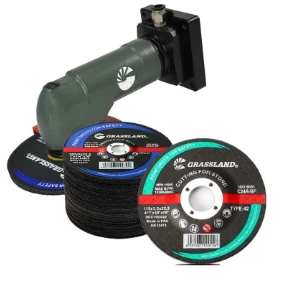The Essential Role of Metal Discs in Grinding Applications
In the world of industrial and DIY projects, metal discs for grinders are indispensable tools that facilitate a variety of grinding, cutting, and polishing tasks. These discs come in different shapes, sizes, and materials, each designed for specific applications. Understanding the importance and functionality of these metal discs is essential for anyone looking to achieve optimal results in their grinding endeavors.
Types of Metal Discs
Metal discs are categorized based on their composition and intended use. The most common types include cutting discs, grinding discs, and flap discs, each serving a unique purpose
1. Cutting Discs These thin, abrasive discs are designed to cut through metal, masonry, or other hard materials with precision. Typically made from reinforced resin and abrasive grains, cutting discs require a high rotational speed to achieve clean cuts. They are commonly used in metal fabrication, plumbing, and electrical work.
2. Grinding Discs Thicker and more robust than cutting discs, grinding discs are designed for the removal of material, smoothing surfaces, and shaping metal. Made from a combination of aluminum oxide or silicon carbide, these discs can efficiently grind down steel and other metals. Their durability makes them ideal for both heavy industrial use and lighter applications.
3. Flap Discs These versatile discs consist of multiple overlapping layers or flaps of abrasive material, offering both grinding and finishing capabilities. Flap discs are particularly useful for blending, deburring, and polishing, making them essential for final surface preparations. Their design allows for efficient heat dissipation, reducing the risk of damage to the workpiece.
Material Composition
metal disc for grinder

The efficiency and longevity of metal discs largely depend on their material composition
. The most common materials used in manufacturing these discs include- Aluminum Oxide This is the most popular abrasive material for general-purpose grinding. It is hard and durable, making it suitable for grinding ferrous and non-ferrous metals.
- Silicon Carbide Known for its sharpness, silicon carbide is excellent for grinding non-ferrous metals like aluminum and brass. It is also effective in working with hard materials like ceramic and glass.
- Zirconia Alumina This material is preferred for heavy grinding applications, offering high durability and efficiency. Zirconia alumina discs are often used in aggressive applications where speed and material removal are critical.
Safety Considerations
While metal discs for grinders are powerful tools, safety is paramount when using them. Operators should always wear appropriate personal protective equipment (PPE), including safety goggles, gloves, and ear protection. Additionally, it is vital to inspect the discs for any signs of wear or damage before use. Users should adhere to the manufacturer's guidelines regarding maximum RPMs and ensure that the disc is correctly mounted on the grinder to prevent accidents.
Conclusion
Metal discs for grinders play a crucial role in various industries, from construction and manufacturing to automotive repair. Their flexibility in handling different tasks makes them an invaluable addition to any toolkit. By understanding the types of discs available, their material compositions, and the best practices for using them safely, both professionals and DIY enthusiasts can maximize the efficiency and effectiveness of their grinding operations. Investing in high-quality metal discs and maintaining them properly can lead to better results, reduced downtime, and enhanced safety on the job. Whether you're cutting, grinding, or polishing, having the right metal disc is fundamental to achieving the desired outcome.
Post time:Dec - 06 - 2024

















